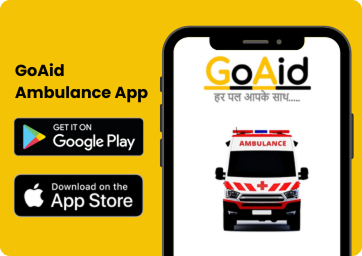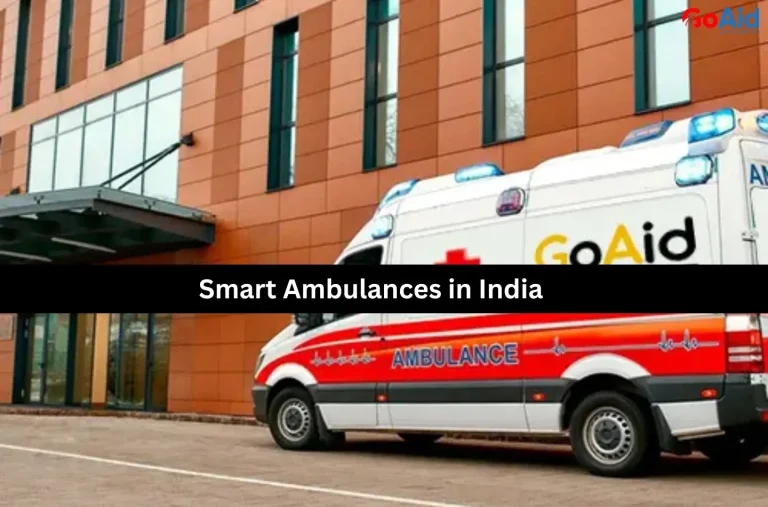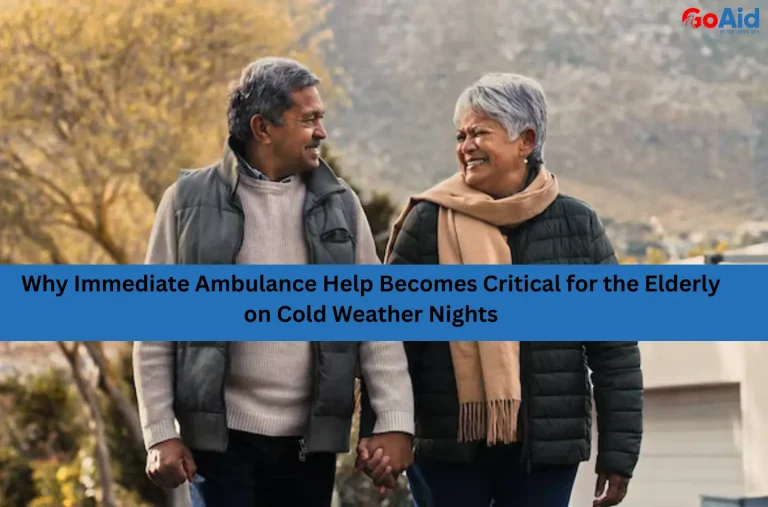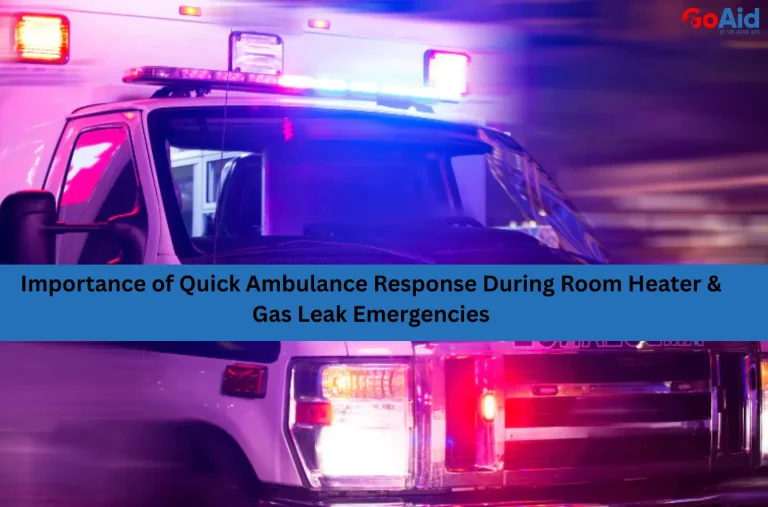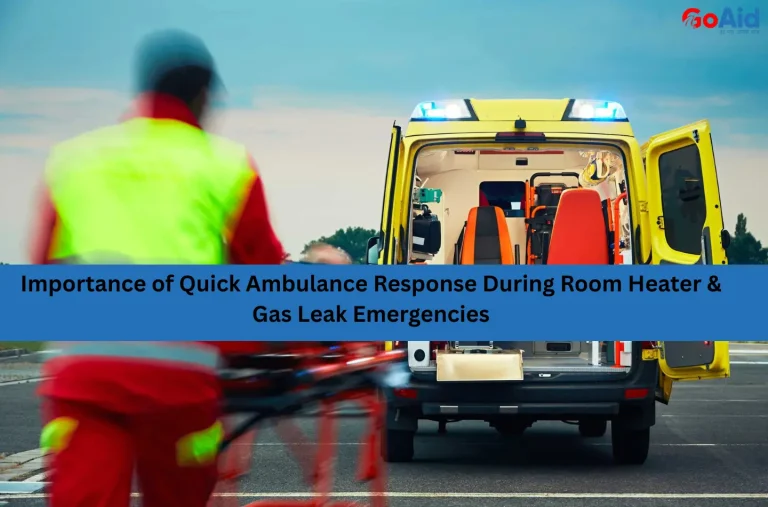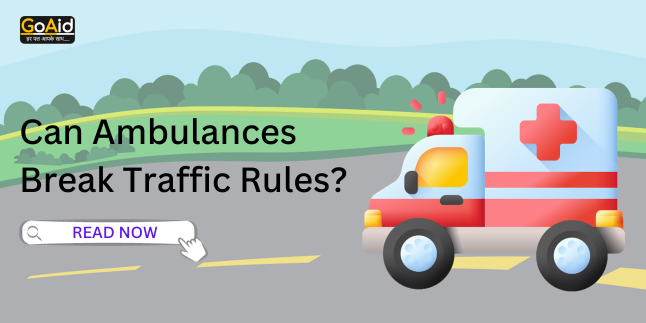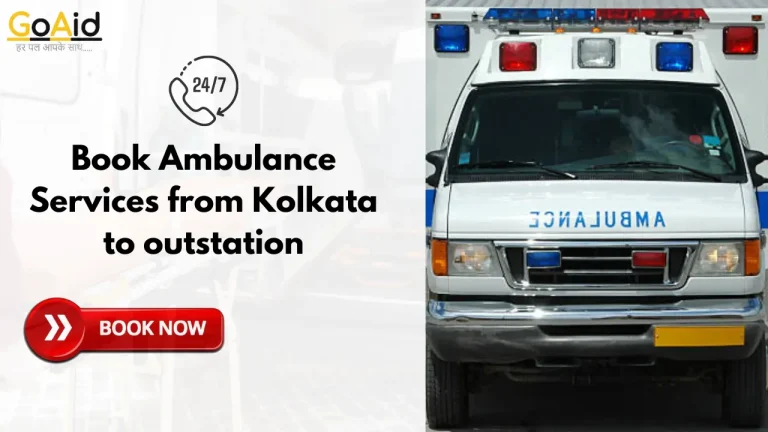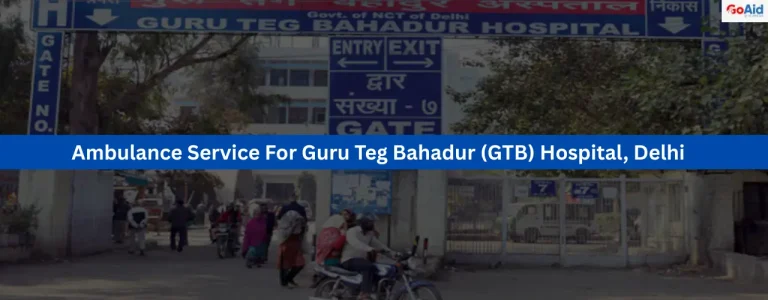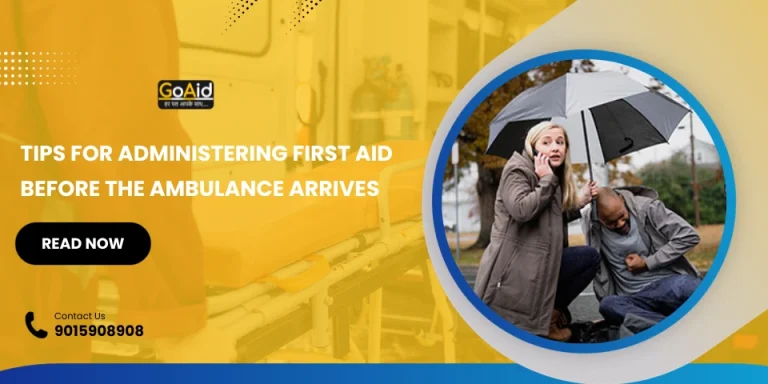In India, you might have seen many NGOs and other disaster relief organizations working tirelessly 24/7. But during their work, they also face many hazardous conditions that require immediate medical attention, and on-site ambulances are deployed all the time. Still, there are a lot of people thinking about why these organizations and NGOs need on-site ambulances.
This is why, in this blog, we have mentioned in full detail the topic of the need for ambulance services in NGOs & disaster relief organizations. Are you also one of those who want to know full information about this topic?┬Ā
Then in this blog, we have mentioned all of it, including an overview of the organizations in India, their common health and safety issues, and why ambulances are required for their work, types of ambulances they may need, and more. Are you excited to know all these details? Then read this blog fully.
So, letŌĆÖs begin:
Overview of the NGOs & Disaster Relief Organizations in India
In India, NGOs and disaster relief organizations play a critical role in serving communities during crises such as natural disasters, health emergencies, and humanitarian challenges. These organizations often operate in areas where immediate government assistance may take time to reach. Their focus ranges from rescue operations and food distribution to providing shelter and essential healthcare support.
With a large network of volunteers and professionals, Indian NGOs like the Red Cross Society, Goonj, and Save the Children, along with disaster-specific agencies like NDRF support teams, work extensively across rural and urban areas. These organizations are often the first responders in flood-hit zones, earthquake-affected regions, or during large-scale evacuations.
Given the unpredictable and high-risk nature of their work, having access to a reliable ambulance for NGOs and an emergency ambulance for disaster relief becomes essential. It not only enhances their efficiency but also ensures timely medical support for NGOs serving people in critical need.
Common Health & Safety Problems at NGOs & Disaster Relief Organizations
Working in disaster zones and emergency conditions, NGOs and relief workers often face serious health and safety challenges. These risks make the presence of an ambulance service for humanitarian aid critical. Here are some common problems:
1. Physical Injuries During Rescue Operations
Rescue efforts often involve collapsing buildings, heavy debris, or unsafe terrain. These environments frequently cause fractures, head injuries, or wounds, requiring immediate NGO emergency medical service and transport for the injured in disaster sites to prevent complications or fatalities.
2. Exposure to Infectious Diseases
NGO workers and volunteers often serve in flood zones or unhygienic conditions, increasing the risk of infection. Fast emergency healthcare in disaster zones and isolation-ready ambulances help prevent disease spread and offer early treatment to infected individuals.
3. Dehydration and Heatstroke
Relief work in extreme weather, especially during summer, can lead to dehydration or heat-related illness. Having an ambulance for NGOs on standby ensures timely hydration, first aid, and, if needed, hospitalization to avoid long-term health issues.
4. Mental Health Breakdown
Disaster exposure, trauma, and fatigue may lead to anxiety or mental breakdowns among workers. An on-ground ambulance support for NGOs ensures they can receive psychological first aid or be referred to appropriate mental health care centers swiftly.
5. Lack of Immediate Medical Supplies
Many remote or disaster-hit areas lack basic first-aid facilities. Mobile medical aid during disasters via ambulances helps deliver on-time care, stabilizing patients before transferring them to nearby hospitals or temporary medical units for NGOs.
6. Accidents During Transportation
Travel through floodwaters, damaged roads, or landslides poses accident risks. Having a relief organization ambulance service ensures injured staff and civilians receive immediate attention, minimizing harm in high-risk mobility situations.
7. Overexertion and Fatigue
Continuous work with minimal rest can result in physical exhaustion or fainting. A standby ambulance for disaster response equipped with paramedics ensures workers regain strength and receive essential care without leaving the relief zone.
The Risky Nature of NGOs & Disaster Relief Organizations [h3]
NGOs and disaster relief organizations often operate in high-risk, unpredictable environments. It doesnŌĆÖt matter if it’s during earthquakes, floods, pandemics, or large-scale fires; these teams are usually the first to respond. Their work demands entering unstable buildings, navigating rough terrains, and engaging in physical rescueŌĆöall without certainty of safety. The lack of structured infrastructure in disaster zones adds to the risk, putting both volunteers and affected individuals in danger.
Additionally, these teams often work long hours with limited medical backup, increasing the chances of physical exhaustion, infections, and injuries. In such volatile situations, the presence of an ambulance for NGOs or disaster relief ambulance support becomes not just beneficial, but essential.┬Ā
These ambulances provide immediate care, stabilize victims, and transport them to safer medical facilities. Without them, even minor injuries or delays in response can turn fatal, highlighting the urgent need for integrated medical support for NGOs in every operation.
Current Problems Faced
Despite their vital role, many NGOs lack access to timely emergency care. The unavailability of ambulance service for humanitarian aid, poor medical infrastructure, and limited government support hamper their effectiveness. Most operate in remote or unsafe regions where reaching a hospital could take hours. In medical emergencies, this delay can result in avoidable deaths or complications.
Additionally, many NGOs lack trained medical staff on-site. This creates a dependency on external help, which is often slow. Without proper on-ground ambulance support for NGOs, even basic injuries remain untreated, affecting both volunteers and the victims they aim to help.
Why Ambulance Services Are Essential for NGOs & Disaster Relief Organizations?
Ambulance services act as a lifeline for NGOs and disaster relief groups working in unpredictable and high-risk environments. Here’s why ambulance for NGOs is no longer optionalŌĆöitŌĆÖs essential:
1. Immediate Response to Injuries
In disaster zones, injuries are common. An emergency ambulance for disaster relief ensures quick stabilization and transport for the injured in disaster sites, preventing minor wounds from becoming life-threatening. This quick medical response for displaced populations is crucial in crises.
2. Mobile Healthcare in Remote Areas
Many disaster-prone zones lack hospitals or clinics. Mobile medical aid during disasters allows NGOs to provide first aid, health screenings, and treatment via ambulances equipped with temporary medical units for NGOs. With it, we ensure uninterrupted care delivery in remote regions.
3. Mental and Physical Fatigue Support
Relief workers often suffer from burnout or collapse due to overexertion. Having NGO emergency medical service like GoAid Ambulance Service nearby ensures exhausted volunteers receive proper rest and medical checks through on-ground ambulance support for NGOs.
4. Rapid Disaster Site Evacuation
In cases like floods or building collapses, fast evacuation becomes essential. A relief organization ambulance service helps shift injured individuals to field hospital ambulance support setups, reducing delays in care and improving outcomes in emergency healthcare in disaster zones.
5. Strengthening Humanitarian Infrastructure
The ambulance service for humanitarian aid strengthens the overall medical infrastructure for NGOs. By integrating ambulances for disaster response into field missions, organizations improve operational efficiency and ensure dependable health services during natural disasters.
Types of Ambulance Services Might be Required in the NGOs & Disaster Relief Organizations
Disaster zones and humanitarian missions demand a variety of ambulance services tailored to specific emergencies. GoAid ambulance services in India are known as the best ambulance provider that provide all of these following ambulance types that these organizations may ever need. Below are the key ambulance types:
1. Basic Life Support (BLS) Ambulance
BLS ambulances are ideal for transporting stable patients who still need basic medical attention. In disaster-hit areas, these provide medical support for NGOs by offering oxygen, first-aid, and monitoring during transitŌĆöcrucial for non-critical yet urgent cases in emergency healthcare in disaster zones.
2. Advanced Life Support (ALS) Ambulance
Equipped with advanced medical tools and trained paramedics, ALS ambulances are designed for critically ill or injured patients. These ambulances serve as mobile ICUs, essential for NGO emergency medical service in severe trauma situations like earthquakes or floods. With it, we ensure life-saving intervention before hospital admission.
Also Read: Difference between BLS Ambulance and ALS Ambulance
3. ICU Ventilator Ambulance
For victims needing intensive care during transport, ICU ventilator ambulances are indispensable. They provide full respiratory and cardiac support, often required in severe injuries or prolonged disasters. Such ambulances enhance the role of ambulances in relief operations with their capability to stabilize high-risk patients.
4. Ambulance for Flood and Earthquake Zones
Specially built for navigating rough terrains and waterlogged areas, these ambulances ensure access to the most affected regions. They are critical for ambulances in flood and earthquake zones. This makes disaster relief ambulance support more reliable in locations with damaged or inaccessible roads.
5. Dead Body Mortuary Van
In large-scale disasters, fatalities are unavoidable. Dead body mortuary vans are required for dignified and hygienic transport of deceased individuals. NGOs need these for transport for the injured in disaster sites and handling casualties while maintaining public health and respectful procedures.
6. Event & Camp Support Ambulance
During relief camps or health drives, ambulance service for humanitarian aid is required on standby for sudden emergencies. These ambulances provide immediate first aid, transport, and act as temporary medical units for NGOs, supporting large gatherings during mass aid distributions or medical missions.
7. Interstate Ambulance Service
For transferring critical patients to specialized facilities across states, interstate ambulance services are vital. In long-term relief efforts, these help NGOs relocate patients when local hospitals are full, enhancing medical infrastructure for NGOs and maintaining continuity of care for displaced or high-risk individuals.
Current Challenges in Providing Ambulance Services to NGOs & Disaster Relief Organizations
Delivering effective ambulance services to NGOs and disaster relief organizations faces multiple hurdles. From difficult terrains to resource constraints, these challenges impact the efficiency of emergency ambulance for disaster relief and medical support for NGOs.
1. Difficult Terrain and Accessibility
Remote and disaster-affected areas often lack proper roads. This makes it hard for ambulance for NGOs to reach victims promptly, delaying quick medical response for displaced populations and impacting emergency healthcare in disaster zones.
2. Limited Ambulance Availability
Many NGOs struggle with the scarcity of dedicated relief organization ambulance services, affecting their ability to provide continuous ambulance service for humanitarian aid during peak disaster response operations.
3. Inadequate Medical Equipment
Ambulances without proper life-saving tools or ventilators compromise the quality of NGO emergency medical service, limiting effective treatment during critical moments in ambulance in humanitarian missions.
4. Shortage of Skilled Paramedics
Lack of trained paramedics hinders efficient mobile medical aid during disasters, reducing the effectiveness of the role of ambulances in relief operations and increasing risks for patients.
5. Communication Breakdowns
Poor connectivity in disaster zones obstructs coordination for ambulance for disaster response, delaying dispatch and causing ineffective deployment of on-ground ambulance support for NGOs.
6. Funding Constraints
Financial limitations restrict NGOs from acquiring enough ambulances or upgrading to specialized vehicles, limiting medical infrastructure for NGOs and reducing reach in emergency zones.
7. Regulatory and Licensing Issues
Cross-border or interstate relief efforts face legal challenges in deploying interstate ambulance service, hampering smooth field hospital ambulance support and patient transfers across regions.
8. Overwhelming Number of Casualties
Mass casualty events overwhelm existing ambulance capacity, delaying transport for injured in disaster sites and stretching disaster relief ambulance support beyond operational limits.
9. Harsh Environmental Conditions
Extreme weather and natural barriers challenge ambulance operations in ambulance for flood and earthquake zones, requiring specially equipped vehicles and trained drivers to navigate safely.
10. Coordination with Government Agencies
Lack of seamless collaboration between NGOs and authorities delays ambulance service for humanitarian aid and disrupts health services during natural disasters, impacting overall disaster response effectiveness.
The Right Solution ŌĆō On-site Ambulance Services for NGOs & Disaster Relief Organizations
The solution to overcoming ambulance service challenges lies in reliable, on-site ambulance support. GoAid Ambulance Service in India efficiently delivers these services. With it, we ensure timely emergency response for NGOs and disaster relief organizations nationwide.
1. Rapid Response Time
The rapid response time ensures ambulances reach disaster sites quickly, minimizing delays in critical emergency ambulance for disaster relief and saving lives during urgent medical situations.
2. Diverse Ambulance Fleet
These ambulances include BLS, ALS, ICU, and specialized vehicles, allowing tailored ambulance service for humanitarian aid suited to varied medical emergencies faced by NGOs in disaster zones.
3. Skilled Medical Staff
GoAid provides trained paramedics and medical professionals who deliver competent medical support for NGOs. With it, we ensure high-quality care during patient transport and on-site emergencies.
4. Advanced Medical Equipment
The ambulances are equipped with state-of-the-art medical devices and life-support systems, enhancing the effectiveness of NGO emergency medical service and improving patient outcomes.
5. 24/7 Availability
The service operates round-the-clock, guaranteeing disaster relief ambulance support is available whenever needed, critical during unpredictable natural disasters and emergency missions.
6. Multiple Booking Options
GoAid offers easy booking through phone and app, simplifying access to relief organization ambulance service and enabling fast mobilization of ambulances during crises.
7. Nationwide Coverage
The extensive network covers all major regions in India. This provides reliable ambulance for NGOs and ensuring reach even in remote or difficult-to-access disaster areas.
8. Compliance with Regulations
GoAid strictly adheres to government regulations and licensing requirements. With it, we ensure legal and safe operations in all ambulance for disaster response scenarios.
9. Coordination with Authorities
The service maintains effective communication and coordination with government and relief agencies, optimizing on-ground ambulance support for NGOs during large-scale disaster relief efforts.
10. Affordable and Transparent Pricing
GoAid provides cost-effective ambulance services with government-approved rates. With it, we ensure NGOs can access essential medical infrastructure for NGOs without financial strain.
Future of Emergency Medical Services in NGOs & Disaster Relief Organizations
The future of emergency medical services for NGOs and disaster relief organizations is increasingly focused on rapid, efficient, and technologically advanced ambulance solutions. With growing awareness of the importance of immediate medical care in disaster zones, there will be greater integration of mobile health units and telemedicine in ambulances.
Innovations like GPS tracking, real-time patient monitoring, and AI-driven triage systems will enhance ambulance for disaster response capabilities. Additionally, more NGOs will invest in specialized ambulances tailored to diverse emergencies, including mass casualty incidents and pandemic responses.
The role of GoAid Ambulance Service and similar providers will expand. With it, we ensure nationwide accessibility and faster response times. Increased government and private partnerships will boost funding, improving medical infrastructure for NGOs. Emphasis on training paramedics and strengthening coordination between relief organizations and healthcare systems will ensure efficient emergency ambulance for disaster relief.
Overall, emergency medical services will become more adaptive, resilient, and responsive to the evolving needs of disaster-affected populations.
Legal Obligation for On-Site Ambulances in India for NGOs & Disaster Relief Organizations
In India, the legal framework increasingly emphasizes the importance of on-site ambulance availability for NGOs and disaster relief organizations. Several government regulations mandate that organizations engaged in humanitarian aid and disaster response must ensure immediate medical support, including accessible ambulance services.
The Motor Vehicles Act and various disaster management guidelines require relief organizations to maintain adequate ambulance service for humanitarian aid to facilitate timely medical care during emergencies. The National Disaster Management Authority (NDMA) advocates for proper medical infrastructure, including ambulances, at disaster sites.
NGOs operating in high-risk zones or large-scale relief missions are legally expected to comply with these safety norms. Failure to provide on-site ambulances may result in penalties or operational restrictions. Furthermore, government-approved ambulance providers like GoAid Ambulance Service help NGOs meet these obligations efficiently.
With it, we ensure compliance while delivering quality NGO emergency medical service. These legal requirements highlight the critical role ambulances play in safeguarding lives during disaster relief operations in India.
How can GoAid be used as a Reliable Partner for NGOs’ Ambulance Needs?
GoAid Ambulance Service stands out as a trusted partner for NGOs and disaster relief organizations by providing fast, efficient, and specialized ambulance services. Their fleet is equipped with advanced medical equipment, and highly trained paramedics ensure top-quality medical support for NGOs.
GoAidŌĆÖs 24/7 availability and nationwide reach guarantee timely response during critical emergencies. With easy booking through mobile apps and phone, NGOs can rely on GoAid for quick deployment. The companyŌĆÖs commitment to affordable, government-approved rates and seamless coordination with relief operations makes it an ideal choice for ambulance for disaster response and humanitarian missions across India.
Benefits of Hiring GoAid for NGOs and Disaster Relief Organizations
- Rapid 10-minute ambulance response time
- Diverse fleet tailored to emergency needs
- Skilled paramedics and medical staff onboard
- 24/7 availability, including holidays
- Nationwide coverage, including remote areas
- Easy booking via app and call
- Government-approved, affordable pricing
- Coordination with local authorities and relief teams
- Equipped for varied disaster scenarios
- Trusted partner with proven experience in humanitarian aid
Case Studies/Examples
GoAid Ambulance Service is proudly tied up with the Adani Group. This provides on-site ambulances across their green energy, construction, and various industrial units. This partnership ensures quick medical response and enhanced safety at these critical locations.┬Ā
Similarly, GoAid supports TataŌĆÖs manufacturing units and factories with specialized on-site ambulance services. This helps manage workplace emergencies efficiently.
In addition, GoAid extends its trusted ambulance services internationally by supporting Knight Frank, a leading UK real estate company, with dedicated on-site ambulance solutions. These partnerships highlight GoAidŌĆÖs capability to deliver reliable relief organization ambulance service across sectors and borders.
Conclusion to the Need for Ambulance Services in NGOs & Disaster Relief Organizations
In conclusion, we have provided comprehensive insights into why NGOs and disaster relief organizations require specialized ambulance services. Timely medical intervention can save countless lives during emergencies.
This makes on-site ambulances essential. GoAid Ambulance Service emerges as the best choice. This offers fast response times, advanced medical support, and extensive coverage across India. Their commitment to quality, affordability, and coordination makes them an ideal partner for any NGO or disaster relief mission seeking reliable emergency ambulance services.
Call-to-Action (CTA)
If your NGO or disaster relief team needs a reliable on-site ambulance for immediate medical emergencies, trust GoAid. We offer the best, affordable ambulance services with fast response times. Call us now to ensure safety and swift medical support for your mission.
FAQs to the Need of Ambulance Services in NGOs & Disaster Relief Organizations
Q1: Why are ambulances needed at NGOs & Disaster Relief Organizations?
Ans: Ambulance for NGOs is vital to provide immediate medical support during emergencies. GoAid Ambulance ensures quick medical response for displaced populations, delivering emergency ambulance for disaster relief and life-saving care on-site.
Q2: What types of injuries are common in the NGOs & Disaster Relief Organizations?
Ans: Injuries range from trauma, fractures, burns to dehydration and respiratory issues. GoAid offers specialized ambulance service for humanitarian aid with mobile medical aid during disasters to address diverse health emergencies promptly.
Q3: Is it mandatory to have ambulance services at NGOs & Disaster Relief Organizations in India?
Ans: While not universally mandatory, many disaster zones require ambulance for disaster response by law. GoAid provides NGO emergency medical service ensuring compliance with legal requirements and prompt emergency healthcare in disaster zones.
Q4: Can private companies provide ambulance services to NGOs & Disaster Relief Organizations?
Ans: Yes, private relief organization ambulance service providers like GoAid Ambulance Service offer reliable on-ground ambulance support for NGOs with government-approved and affordable services in disaster zones.
Q5: What should NGOs & Disaster Relief Organizations look for in an ambulance service provider?
Ans: They must prioritize quick response times, trained paramedics, diverse fleet, and experience in ambulance in humanitarian missions. GoAid excels in medical infrastructure for NGOs and disaster relief ambulance support.
Q6: What is an on-site ambulance service?
Ans: On-site ambulance service means ambulances stationed directly at NGO or disaster sites for immediate response. GoAidŌĆÖs ambulance for flood and earthquake zones delivers fast, life-saving transport for injured in disaster sites.
Q7: How does an ambulance service improve worker safety on NGOs & Disaster Relief Organizations?
Ans: Ambulance services provide rapid transport and medical support reducing fatality risk. GoAidŌĆÖs field hospital ambulance support enhances health services during natural disasters. With it, we ensure safety for workers and displaced populations.
Q8: Can ambulance services be customized based on the size of the project?
Ans: Yes, GoAid Ambulance Service offers scalable relief organization ambulance service and temporary medical units for NGOs to match the needs of small to large disaster relief projects.
Q9: Are there any legal obligations for emergency medical support at NGOs & Disaster Relief Organizations?
Ans: Certain regulations mandate medical support for NGOs, especially in disaster zones. GoAid ensures NGO emergency medical service meets all legal and health guidelines for comprehensive emergency healthcare in disaster zones.
Q10: How much does it cost to hire an ambulance service for a construction project?
Ans: Costs vary by service type and location. GoAid Ambulance Service offers affordable government-approved rates. This provides excellent disaster relief ambulance support without compromising quality or response speed.


